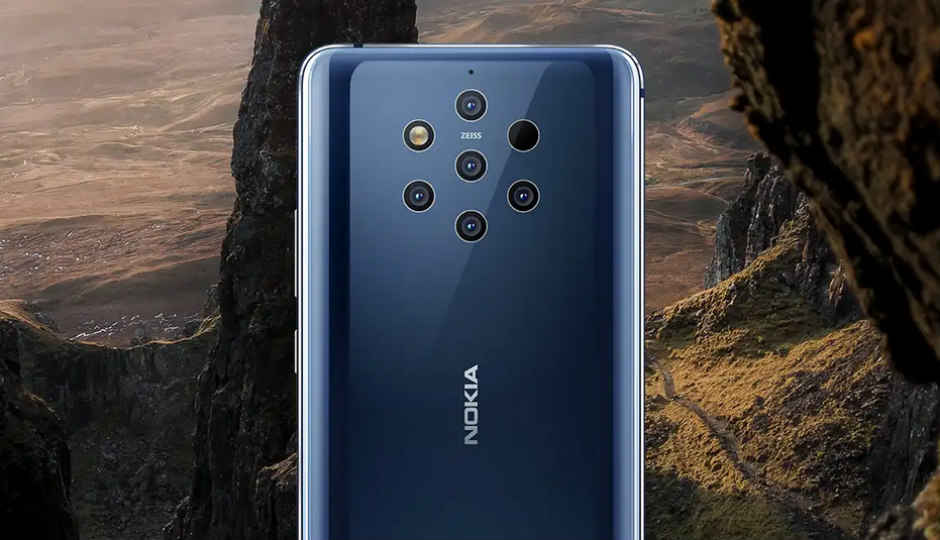Here’s how the Nokia 9 PureView uses five cameras in tandem to create a single shot with crazy amount of detail
Curious about how Nokia is using a five-camera array to create ultra-detailed photos? Read on.

The Google Pixel cameras have always been so far ahead of the competition with their computational photography chops that most other flagship cameras have been all about matching up to that. The new Nokia 9 PureView might come dangerously close and might just even surpass it. With five cameras that work simultaneously, the Nokia 9 PureView can take some astounding shots as shared by Edoardo Cassina, Nokia’s social media chief on Instagram —
 Survey
Survey
It’s perhaps the most ambitious phone by Nokia yet and has been rumoured and leaked ever since Nokia made a comeback in 2017. And for good reason. The five cameras on the Nokia 9 PureView work differently than other multi-camera phones like the Samsung Galaxy A9 and the Huawei Mate 20 Pro. Where most offer a wide-angle sensor combined with a telephoto and depth sensor, the Nokia 9 PureView uses the five cameras for computational photography. We are still awaiting an official white paper from Nokia detailing how the cameras work, but from what we gathered, here’s what the five cameras on the Nokia 9 PureView do —
The key difference between the common multi-camera setups and the Nokia 9 PureView is the camera sensors. Unlike the LG V40 ThinQ or the Huawei Mate 20 Pro where there’s an array of standard, wide-angle and telephoto sensors, the Nokia 9 has the same specs for the five sensors. Each of them has 12MP resolution with an f/1.8 aperture. Two of the five sensors shoot in colour while the other three shoot in monochrome.
When you press the button to take a shot, all the five sensors shoot at the same time, at different exposures. Nokia then uses a dedicated chip along with the Snapdragon 845 SoC to fuse the images together to create a single shot with a crazy amount of detail. Nokia even claimed the individual sensors sometimes shoots multiple images in different exposures to add more data to the image. Nokia claims the camera can deliver 12.5 stops of dynamic range, which is something more common in full-fledged DSLRs.
Nokia partnered with Light, the same company that made the L16, the camera with 16 individual camera sensors in 2017. The Nokia 9 uses Light’s proprietary Lux Capacitor camera-control chip to manage the data from the five sensors. Notably, the Snapdragon 845 can only support up to three sensors.
The camera also gathers a lot of data when shooting portrait shots. The Nokia 9 PureView uses the ToF depth sensor to gather 1,200 layers of depth data, unlike other phones which usually capture only 10 layers. That allows the bokeh to be denser the farther back you go from the subject, making it as realistic as possible.
Now we’re yet to get our hands on a final unit. The information we gathered was from a prototype device that HMD Global showed us before the phone’s official launch. The unit wasn’t running the final software and perhaps that’s why the processing took some time. Nevertheless, Nokia claimed the cameras use every bit of the Snapdragon 845’s components to create the images. Every core of the Snapdragon 845 is doing something when you shoot an image. The DSP performs noise reduction, which Nokia claimed is 3x faster than the CPU and consumes 10 times less power. The GPU creates the depth map while the ISP and the ASIC fuse the images together.
The Nokia 9 PureView also offers in-house editing of the photos. While it’s not clear whether the phone is able to capture images in the HEVC format, which stores more data, the phone offers a customised version of Google Photos that lets you view and edit DNG RAW files. Furthermore, the phone gives the option to download Adobe Lightroom when you’re setting it up.
There’s also the Nokia Pro camera app that allows the shutter to remain open for 10 seconds when mounted on a tripod. Otherwise you get only 4 seconds of exposure. There’s no OIS
for the sensors as Nokia said there was no space to put the magnets. There’s a chipset-level EIS though and the Nokia 9 PureView can capture video in 4K. However, the five-camera array does not work in tandem when shooting videos.
There’s a lot more to unpack about the Nokia 9 PureView’s camera. HMD Global has made it a mission to bring back everything that made the old Nokia brand iconic. From reviving classic variants like the Nokia 3310 and the Banana Phone, to now making a big jump forward in computational photography with the PureView brand, it’s safe to say Nokia is back in the game again. The PureView brand has always stood for cutting-edge photography like when Nokia launched the Lumia 1020 back in 2013 with a 40MP camera. With a radical five-camera setup, the Nokia 9 also seems to deserve the title. But does it really work as advertised? We will find out soon enough.
Stay updated with the latest news about new smartphone launches in our MWC 2019 section.